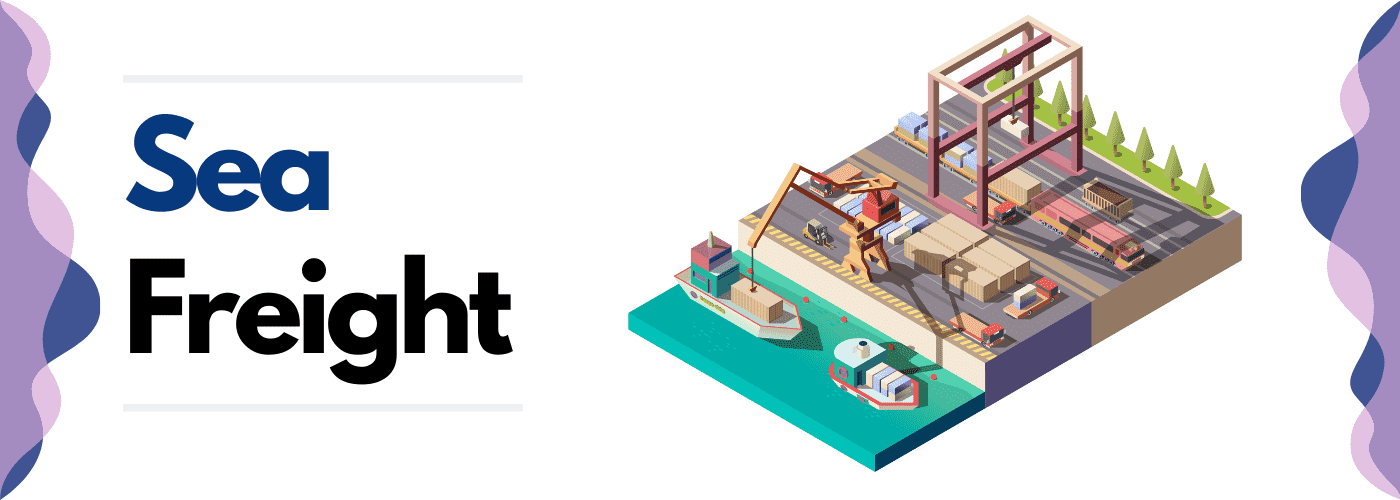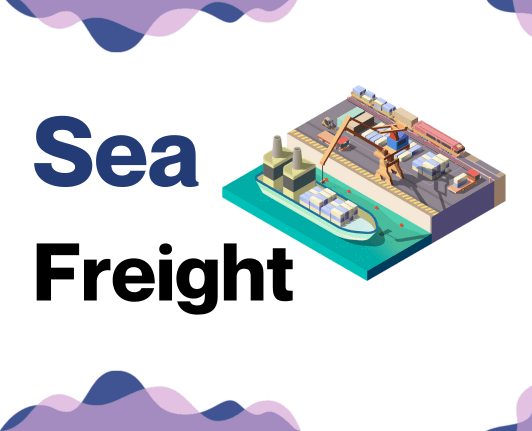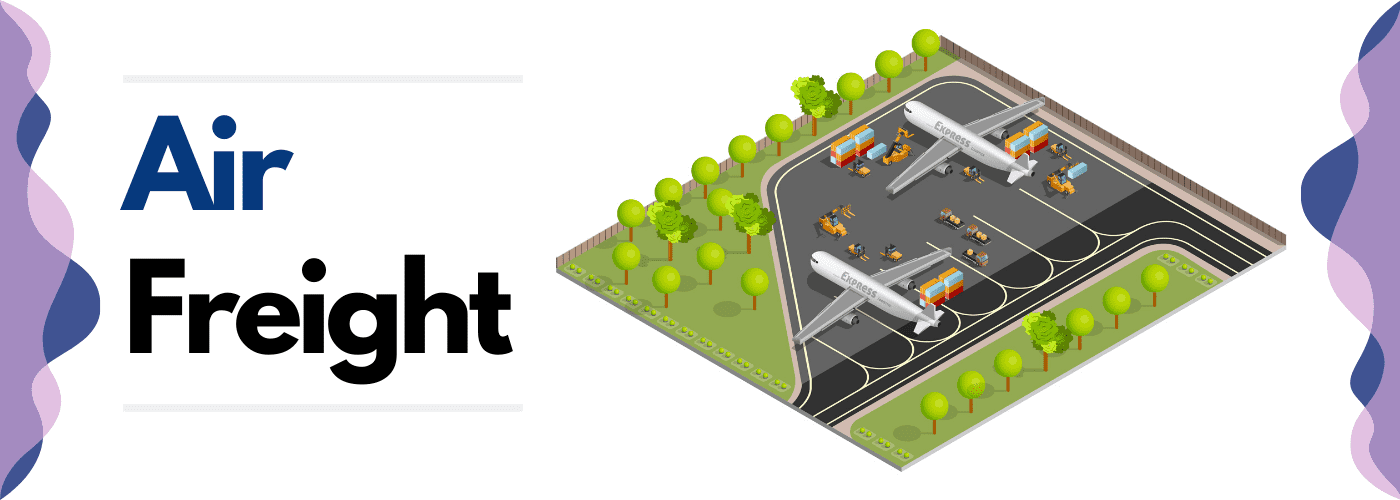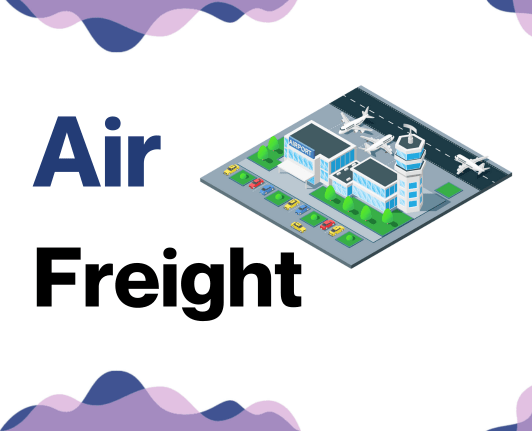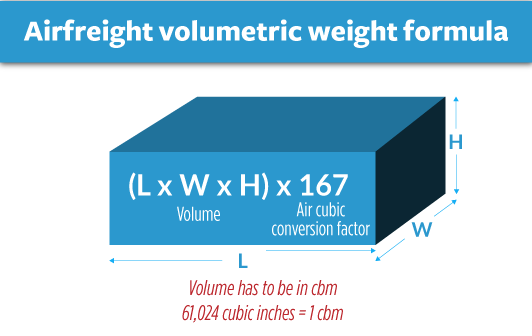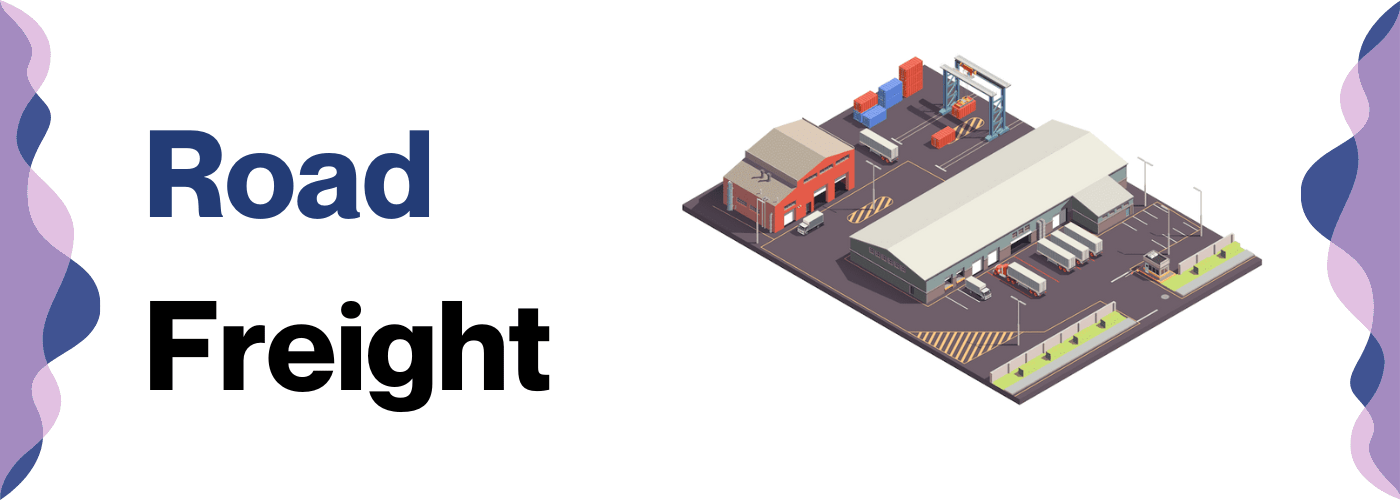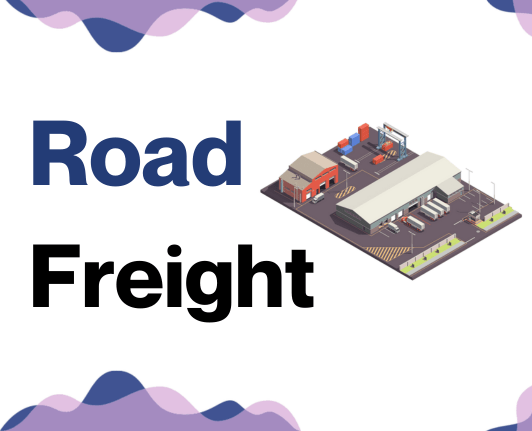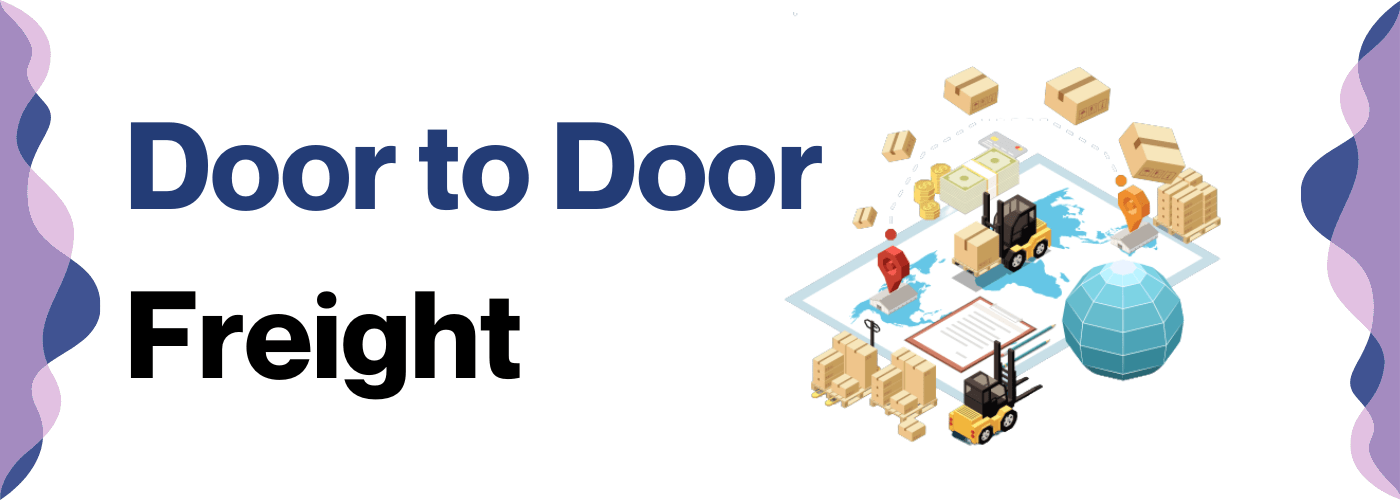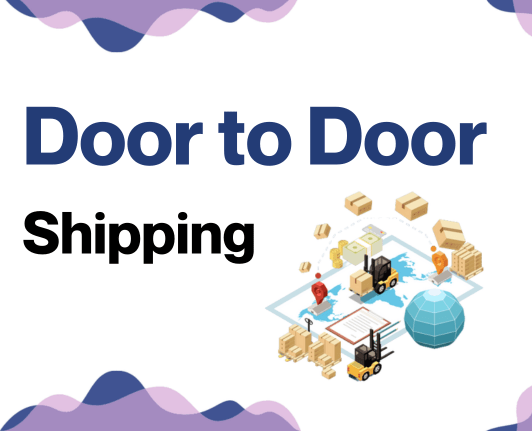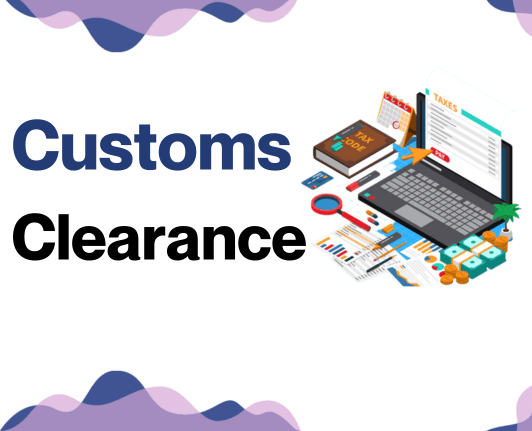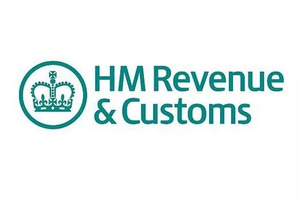Are you fretting over Finnish freight? Fear not! Establishing a reliable, cost-effective shipping route between the UK and Finland might feel like a daunting task due to the fluctuating rates, varied transit times, and ever-changing customs regulations. This comprehensive guide is here to equip you with all the knowledge you need to ease your shipping worries. We will delve into a range of freight options and clear the fog around customs clearance, duties, taxes, and provide tailored advice to ensure smooth sailing for your business. If the process still feels overwhelming, let DocShipper handle it for you! We are seasoned experts in international freight forwarding - turning your transportation challenges into success stories, one shipment at a time!
Table of Contents
Which are the different modes of transportation between UK and Finland?
Journeying goods from UK to Finland can feel like a game of chess, where each move has strategic importance. Distance and international borders warrant careful selection between air, sea, road, and rail transit. Think of it like choosing the right team player: a speedy knight (air freight) for urgent deliveries, the solid rook (sea freight) for bulk shipments, the versatile bishop (road freight) for flexible routes, or the resilient pawn (rail freight) for cost-efficiency. Like in chess, the winning move is the one that suits your game plan best--your shipping needs.
How can DocShipper help?
Looking to ship goods between the UK and Finland? At DocShipper, we manage all logistics complexities, from customs clearance to choosing the best transport solution. It's like having your personal trade-award-winning concierge for freight. A question about shipping or need a free estimate? Reach out to our consultants anytime!
DocShipper Tip: Ocean freight might be the best solution for you if:
- You're dealing with large quantities or oversized items. Sea freight offers a budget-friendly way to maximize space, a particularly useful option given the UK's extensive port network.
- Your shipment isn't on a tight schedule. Ocean transport typically takes longer than air or rail, but it offers reliability.
- Your supply chain involves key ports, allowing you to take advantage of a wide-reaching network of sea lanes.
Sea freight between UK and Finland
The sail from UK to Finland is a journey that ties two vibrant trade partners. Major ports like London Gateway in the UK and Kotka in Finland pivot the wheel of trade, connecting key industrial hubs. Opting for ocean shipping yourself?
You're on the right track! Despite being a slower method, sea freight is like taking a bulk-buy deal at your local supermarket - high-volume goods become a cost-effective breeze. But here comes the stormy weather: it's common for businesses to face turbulent seas and mishaps in this maritime voyage.
Unpredictable waves of shipping rules, customs norms, and unexpected costs can seem like a giant Kraken threatening your ship. Don't fret! Just like sailors have their maps, we have our best practices and specifications.
In this guide, we're like your trusty old lighthouse, illuminating the path to make your shipping journey smoother and mistake-free. Let's navigate those tricky waters together, one wave at a time.
Main shipping ports in UK
Port of Felixstowe
Location and Volume: Situated in Suffolk, the Port of Felixstowe stands as the preeminent container port in the UK, earning the distinction of being the busiest in the country. Remarkably, it manages over 40% of the nation's containerized trade, boasting an impressive annual shipping volume that consistently surpasses 3.8 million TEUs.
Key Trading Partners and Strategic Importance: The port primarily trades with Asia and mainland Europe, also having dedicated services to the Americas and Africa. Situated at the center of Europe's dynamic, high-consuming south-east, it provides a vital connection between the UK and global markets.
Context for Businesses: If your primary markets are in Asia and Europe, or if you're looking for high-volume, efficient operations, the Port of Felixstowe could play a critical role in your distribution strategy due to its massive capacity and strategic geographical position.
Port of Southampton
Location and Volume: Nestled along England's picturesque south coast, the Port of Southampton emerges as a key player in the maritime landscape, renowned for its prominence as one of the UK's foremost vehicle and cruise ports. With an annual shipping volume reaching approximately 1.5 million TEUs, the port contributes significantly to the country's maritime activities, fostering efficient trade and providing a gateway for both vehicles and cruise-related industries.
Key Trading Partners and Strategic Importance: The port serves major markets across the globe, including Asia, North America, and Europe and has extensive capacity for automotive trade. It's conveniently positioned in the country's industrial heartland and has received considerable investments aimed at improving its infrastructure.
Context for Businesses: If you’re in the automotive industry or targeting markets in the Americas and Asia, the Port of Southampton might be crucial for your operations due to its specialized vehicular capacity and strategic location.
Port of London
Location and Volume: Situated at the heart of the United Kingdom, the expansive Port of London stretches along the iconic Thames River, serving as a pivotal hub for maritime activities. Operating with remarkable efficiency, it annually facilitates the movement of over 50 million tonnes of diverse cargo, showcasing its integral role in the nation's logistics network. Notably, the port handles approximately 2 million TEUs, underscoring its versatility and significance in catering to a wide range of shipping needs.
Key Trading Partners and Strategic Importance: The port hosts goods from across the globe, with strong ties to Europe, the Americas, and Asia. Its urban setting places a vast consumer market at its doorstep, making it an attractive distribution hub.
Context for Businesses: If you're looking for a distribution hub in close proximity to vast consumer markets or aiming to leverage transatlantic trade, the Port of London could be key to your logistics and expansion plan.
Port of Liverpool
Location and Volume: Located in the north-western region of England, the Port of Liverpool boasts an expansive global footprint, positioning itself as a key player in the maritime industry. Operating with a keen eye on efficiency, the port annually manages the handling of approximately 700,000 TEUs, showcasing its role as a vital link in facilitating international trade and contributing to the economic vibrancy of the surrounding region.
Key Trading Partners and Strategic Importance: Liverpool primarily trades with the Americas, Asia, and other parts of Europe. It's particularly vital for transatlantic trade and plays a significant role in UK logistics due to its connection with large hinterlands.
Context for Businesses: If your trading focus lies in the Americas, or if you're looking to serve customers in the north and middle of England, the Port of Liverpool could be a strategic point in your shipping journey with its comprehensive connectivity and regional access.
Port of Immingham
Location and Volume: Nestled on England's east coast, the Port of Immingham is the UK's largest port by tonnage, handling 55 million tonnes of diverse cargo annually, including bulk shipments and general goods. Operating with efficiency and strategic importance, it contributes significantly to the nation's trade network. Additionally, the port handles approximately 900,000 TEUs annually, showcasing its versatility in facilitating diverse maritime operations and international trade.
Key Trading Partners and Strategic Importance: It has a comprehensive trade network that encompasses Europe, the Americas, and Asia. Immingham plays a critical role in the UK's energy supply chain, transferring vast quantities of coal and oil.
Context for Businesses: If you deal in bulk or general cargo or want closer connections with energy supply chains, Immingham’s extensive tonnage capacity and trade links make it a potent choice for your logistics.
Port of Dover
Location and Volume: Positioned as the closest British port to mainland Europe, the Port of Dover plays a pivotal role in facilitating international trade, processing an impressive £122 billion worth of goods annually. Renowned as a leader in roll-on/roll-off traffic, the port serves as a vital gateway for seamless transportation between the UK and Europe, contributing significantly to the efficiency and fluidity of cross-border logistics. In addition to its economic impact, the port handles a substantial volume of containers, with an annual throughput of around 5.4 million TEUs, underscoring its importance in fostering both robust trade relationships and smooth cargo movements.
Key Trading Partners and Strategic Importance: Essential trading partners include the European Union, making it a central passage for UK-EU trade. Due to its proximity to mainland Europe, it holds a unique position in the country's supply chain.
Context for Businesses: The Port of Dover can be a pivotal logistics factor if you're largely trading within the European market, seeking faster, efficient ro-ro shipping, or aiming to shorten your supply chain timeframe.
Main shipping ports in Finland
Port of Helsinki
Location and Volume: Nestled in Helsinki, Finland's busiest port harmoniously orchestrates maritime activities. Welcoming over 14.7 million passengers annually, it serves as a vital economic and cultural hub. Simultaneously, the port efficiently manages 14.2 million tons of cargo each year, showcasing its multifaceted role. With a thriving container operation, it handles approximately 800,000 TEUs annually, reinforcing its dynamic position in Finland's maritime landscape.
Key Trading Partners and Strategic Importance: Its main trading partners include Germany, Sweden, Russia, Estonia, and Denmark. As the most important general cargo port in the country, it plays a central role in Finland's foreign trade.
Context for Businesses: If you're looking to tap into the Northern European markets, consider the Port of Helsinki for its well-developed facilities and strong connections across the Baltic Sea.
Port of Turku
Location and Volume: Nestled on the southwestern coast of Finland, the bustling Port of Turku seamlessly integrates passenger and cargo movements. Annually hosting around 4 million passengers, it serves as a vital node for both domestic and international travelers. Simultaneously, the port efficiently handles over 3.7 million tons of diverse cargo, playing a crucial role in regional trade and economic activities. With a container throughput of approximately 500,000 TEUs annually, the port showcases adaptability and importance in Finland's maritime landscape.
Key Trading Partners and Strategic Importance: Key trading partners include Sweden and Estonia. With its strategic location, it functions as a gateway to the Southern part of the Baltic Sea region.
Context for Businesses: If your business is targeting the Scandinavian region, incorporating the Port of Turku into your shipping strategy could help you reach your goals more efficiently.
Port of Kotka-Hamina
Location and Volume: Nestled on Finland's south coast, the Port of Kotka-Hamina is the nation's premier transit hub, facilitating the seamless movement of goods. Annually managing around 10.8 million tonnes of diverse cargo, the port plays a crucial role in both domestic and international trade. Positioned strategically along key shipping routes, it contributes significantly to the region's economic vibrancy. With a dynamic container operation handling approximately 700,000 TEUs annually, the port underscores its importance in cargo logistics and its strategic role in Finland's global maritime connections.
Key Trading Partners and Strategic Importance: The port's main trading partners include Russia, Germany, and the United States. As a significant transit route for Russia, it plays a key role in European-Asian trade connection.
Context for Businesses: For businesses distributing goods to Eastern Europe or Russia, the Port of Kotka-Hamina is an attractive logistics solution to consider due to its swift customs processes and excellent connections.
Port of Oulu
Location and Volume: Nestled along the Gulf of Bothnia in Northern Finland, the Port of Oulu emerges as a vital maritime hub, overseeing the seamless movement of more than 3.4 million tons of diverse cargo each year. Its strategic location positions it as a crucial link in the regional trade network, contributing significantly to economic activities. With an annual container throughput of approximately 450,000 TEUs, the port plays a pivotal role in supporting Finland's maritime operations in the northern reaches.
Key Trading Partners and Strategic Importance: Important trading partners include Sweden, the Netherlands, Russia, and Germany. The port stands as the primary gateway to Northern Finland and Scandinavia while serving as a crucial logistics center for the Baltic Sea.
Context for Businesses: If you're focusing on increasing reach in Northern Europe, the Port of Oulu, with its efficient logistics and versatile services, offers an advantage for your shipping needs.
Port of Naantali
Location and Volume: Situated on the picturesque southwestern coast, the Port of Naantali is a crucial maritime hub overseeing the movement of over 6 million tons of cargo annually. Positioned strategically, it enhances regional economic dynamics and serves as a vital gateway for both domestic and international trade. With an active container operation handling around 550,000 TEUs annually, the port plays a pivotal role in supporting Finland's maritime activities in the southwest.
Key Trading Partners and Strategic Importance: This port’s main trading partners are Sweden, Estonia, and the Netherlands. It’s one of Finland's leading ports catering to ro-ro traffic and serves a significant role in Finland's energy supplies.
Context for Businesses: If your business involves transporting vehicles or large units, the Port of Naantali, with its specialization in ro-ro traffic, may make it a suitable choice for your logistics strategy.
Port of Rauma
Location and Volume: Found on the scenic western coast of Finland, the Port of Rauma serves as a crucial maritime junction, orchestrating the efficient movement of approximately 6 million tons of diverse cargo annually. Its strategic coastal position positions it as a linchpin in regional trade dynamics, fostering economic vitality. With an active container operation boasting an annual throughput of around 600,000 TEUs, the port contributes significantly to the seamless flow of goods and reinforces its pivotal role in Finland's maritime landscape.
Key Trading Partners and Strategic Importance: Notable trading partners include Germany, the UK, Russia, and Denmark. The port is a critical actor in the transport of paper and pulp from Finland.
Context for Businesses: If your operations require shipping paper, forest products, or raw materials, the Port of Rauma provides excellent capabilities and connections that could support your business needs effectively.
Should I choose FCL or LCL when shipping between UK and Finland?
Choosing the perfect sea freight option for your UK-to-Finland shipment can be like navigating a maze - confusing and intricate. Whether to go for FCL (Full Container Load) or LCL (Less than Container Load, popularly known as Consolidation) can drastically affect your shipping cost, delivery time, and efficiency. It's not just about logistics, it's about strategy. Read on to illuminate these paths, weigh the pros and cons, and zero in on the option that's hand-gloved for your specific needs. Your successful shipping story begins here.
LCL: Less than Container Load
Definition: LCL, or Less than Container Load, refers to consolidated shipping where your cargo shares a container with other shippers' goods.
When to Use: LCL shipping is ideal when your cargo volume is less than 15 CBM, providing a cost-effective and flexible solution for lower volume shipments.
Example: Let's say you're a small electronics supplier based in Birmingham shipping 200 laptop units to Helsinki, with total dimensions not exceeding 14 CBM. An LCL shipment would fit your needs perfectly, allowing you to share space with others and only pay for the space you use.
Cost Implications: LCL freight generally has a lower upfront cost since you're only paying for the space you use. However, remember that there may be additional costs involved in consolidation and deconsolidation at ports, and these could impact your overall shipping costs in comparison to a full container load (FCL). Additionally, the lcl shipping quote may vary depending on the seasonal rush and other market dynamics. It's crucial to factor these considerations into your logistics planning and budgeting process.
FCL: Full Container Load
Definition: Full Container Load (FCL) shipping, as its name implies, involves booking an entire container—often a 20' or 40' ft container—for a single shipment. This mode of transport is most economical for larger shipments, typically over 13/14/15 cubic meters (CBM), as you are charged a flat rate for the whole container rather than by volume or weight.
When to Use: Consider a company shipping 15 CBM of machinery parts from Manchester to Helsinki. They obtain an FCL shipping quote and opt for a 20'ft container. Their cargo is securely packed and sealed at the origin, providing a heightened level of security and minimal risk of damage during transit.
Example: In terms of cost, FCL can be more affordable for larger shipments than Less-than-Container Load (LCL). The fcl shipping quote is usually based on the container size, not the weight or volume of goods. The entire FCL container cost is borne by one shipper making it a cheaper option for high-volume shipments. However, it's important to note that costs can vary depending on variables like the specific route and shipping line.
Unlock hassle-free shipping
Unsure whether to choose consolidation or full containers for shipping between UK and Finland? DocShipper, your reliable freight forwarding partner, is here to help! Our ocean freight experts assist in tailoring the best shipping option for your cargo, considering factors such as shipping cost, urgency, and volume. Say goodbye to shipping dilemmas, and hello to effortless logistics. Why wait? Get in touch with us now for a free shipping estimation, and make your shipping hassle-free.
How long does sea freight take between UK and Finland?
The process of shipping goods via sea freight from the UK to Finland typically takes around 5 to 6 days. However, this is an average estimate and actual transit times may vary. Factors such as specific ports used, the weight, and nature of your goods all play a significant role in determining the actual shipping time. As such, we advise you to reach out to a competent and experienced freight forwarder like DocShipper for a tailored quote.
| UK Ports | Finland Ports | Average Transit Time (days) |
| Port of Southampton | Port of Helsinki | 5-7 |
| Port of London | Port of Turku | 4-6 |
| Port of Liverpool | Port of Kotka-Hamina | 3-5 |
| Port of Immingham | Port of Oulu | 6-8 |
*The table represents average transit times and these can vary based on various factors. Contacting a freight forwarder is a key step to understanding the precise shipping times for your specific needs.
How much does it cost to ship a container between UK and Finland?
Understanding the cost to ship a container from the UK to Finland can be complex. Ocean freight rates are not fixed but fluctuate due to numerous factors such as the Point of Loading, destination, the carrier, nature of goods, and the ebb and flow of the monthly market. From a low of about £50/CBM to well over £500/CBM, these shipping costs vary significantly. While we can't quote an exact price here, know that our dedicated shipping specialists are at your service, tailoring solutions to fit your specific needs and ensuring the best rates for your shipment. Every quote is unique, tailored just like your cargo! Remember, we're all in the same boat here - we want to keep your business sailing smoothly!
Special transportation services
Out of Gauge (OOG) Container
Definition: An Out of Gauge (OOG) container, often used for oversized or out of gauge cargo, exceeds the dimensions of a standard shipping container in height, width, or both.
Suitable for: Machinery, vehicles, construction equipment, and more – anything that surpasses standard dimensions.
Examples: Windmill blades, industrial boilers, and heavy machinery parts.
Why it might be the best choice for you: If you're shipping something with dimensions outside of the standard parameters, an OOG container provides the flexibility you need.
Break Bulk
Definition: Break bulk refers to goods that are loaded individually and not in containers. They're usually managed on a piece-by-piece basis, rather than in batches.
Suitable for: Outsize items, heavy machinery and equipment that can't be broken down into smaller components.
Examples: Steel girders for construction, giant tires for mining equipment, or large turbines.
Why it might be the best choice for you: If your cargo is large and heavy but not suited to container shipping, break bulk is a viable option.
Dry Bulk
Definition: Dry bulk shipping involves the transport of homogenous, loose cargo loads such as grains, coal, and iron ore.
Suitable for: Commodities that aren't packaged separately and can be shoveled or poured.
Examples: Grains, cement, coal, and mineral ores.
Why it might be the best choice for you: If your products are unpackageable and need to be transported en-masse, dry bulk transport is a cost-effective solution.
Roll-on/Roll-off (Ro-Ro)
Definition: Roll-on/Roll-off (Ro-Ro) vessels offer wheeled cargo handling, which gets driven on and off the ro-ro vessel.
Suitable for: Any cargo that has wheels, ranging from cars and trucks to trailers filled with goods.
Examples: New and used cars, buses, trucks and tractors.
Why it might be the best choice for you: If you're dealing in vehicles or trailers, Ro-Ro offers a highly convenient and efficient shipping method.
Reefer Containers
Definition: Reefer containers are refrigerated for the transport of perishable goods, keeping them at specific temperatures throughout their sea journey.
Suitable for: Foods, pharmaceuticals, and other sensitive items that need a constant temperature.
Examples: Fresh fruits and vegetables, dairy products, meat, and temperature-controlled medicines.
Why it might be the best choice for you: If your goods are temperature-sensitive and need to stay fresh or cool, then look no further than reefer containers.
At DocShipper, we're experts at helping businesses navigate the complexities of sea freight between the UK and Finland. Don't hesitate to contact us for a free shipping quote in under 24 hours.
DocShipper Tip: Air freight might be the best solution for you if:
- You're facing tight deadlines or need rapid delivery. Air freight is your quickest option, which aligns well with the fast-paced business environment.
- Your shipment is relatively small, under 2 CBM. Air freight is ideal for these more compact loads.
- Your cargo's destination isn't easily reached via sea or rail. This makes air freight a viable option, especially given the extensive network of airports available.
Air freight between UK and Finland
Speedy and reliable, air freight serves as an ace up your sleeve for small, high-value shipments between the UK and Finland. Got a bunch of high-tech gadgets or luxury goods? Sending them airborne could get them to their destination rapidly without breaking the bank. Yet, beware the hidden hurdles! Many shippers stumble by not weighing their options or their goods correctly, causing the cost of air freight to skyrocket. Imagine paying for an elephant's weight in airfare when you're only hauling a horse - doesn't sound fun, does it? In the same way, not knowing the ropes or overlooking the finer details in the shipping process can send your expenses soaring. It's things like these that we're about to explore, making your air freight journey as smooth as a clear sky flight.
Air Cargo vs Express Air Freight: How should I ship?
Ever puzzled over the best way to ship goods from the UK to Finland? Let's break it down for you. Air cargo is like buying space for your goods in a shared airplane while express air freight gets your goods their own dedicated plane for the journey. Understanding these options and their unique benefits can help optimize your shipping process tailored to your business needs. Let's dive in and get those shipments flying high on schedule.
Should I choose Air Cargo between UK and Finland?
Opting for air cargo between the UK and Finland can offer cost-effectiveness and reliability. Top players like Finnair and British Airways provide robust service in this sector. However, it's worth noting transit times may be longer due to airline schedules. As your shipment exceeds 100/150 kg (220/330 lbs), air freight becomes surprisingly lucrative, balancing your budget needs against shipment speed. In this domain, every kilo matters, transforming your freight forwarding strategy. Just remember to factor in the schedule when planning your shipment.
Should I choose Express Air Freight between UK and Finland?
Express air freight uses exclusively cargo planes, like those operated by FedEx, UPS, or DHL, to fast-track your shipments. Ideal for cargo under 1 CBM or 100/150 kg (220/330 lbs), it ensures speedy delivery of goods. Considering your shipment's size and urgency, this choice could be perfect for you. The features of express services such as priority handling, faster customs clearance, and door-to-door delivery can greatly benefit your shipping needs from the UK to Finland. Look to these courier giants for comprehensive solutions that cater to small yet time-sensitive cargo.
Main international airports in UK
Heathrow Airport
Cargo Volume: Heathrow handles over 1.2 million metric tonnes of cargo annually.
Key Trading Partners: United States, China, Germany, Hong Kong, UAE.
Strategic Importance: Being the busiest airport by cargo traffic in all of Europe, Heathrow serves as an important gateway for businesses looking to reach the European market.
Notable Features: State-of-the-art cargo handling facilities that ensure quick turnaround times.
For Your Business: Heathrow's extensive connections to over 180 destinations worldwide and their top-notch cargo services can efficiently expedite your global trading.
Gatwick Airport
Cargo Volume: Approximately 96,000 tonnes of cargo per year.
Key Trading Partners: Spain, United Arab Emirates, United States, Germany, Turkey.
Strategic Importance: Despite being smaller in cargo volume, Gatwick's strategic location south of London offers competitive options for businesses in Southern UK.
Notable Features: Advanced security screening processes and a dedicated cargo terminal.
For Your Business: You might leverage Gatwick's well-established courier transport for time-sensitive or high-value shipments.
Manchester Airport
Cargo Volume: More than 120,000 tonnes of cargo annually.
Key Trading Partners: United States, Spain, China, Italy, Germany.
Strategic Importance: As the busiest airport by cargo traffic outside of London, it provides critical reach to the Northern UK and Ireland.
Notable Features: Manchester offers scheduled and charter freight services across globe.
For Your Business: Manchester’s reliable cargo services connecting key markets makes it an ideal choice if your markets are in North UK or Ireland.
Stansted Airport
Cargo Volume: Handles over 250,000 tonnes of cargo annually.
Key Trading Partners: Hong Kong, United States, China, Spain, UAE.
Strategic Importance: As the UK's third largest cargo airport, Stansted acts as a key hub for air-freight operators serving Europe, North America and Asia.
Notable Features: Possesses one of largest cargo terminals in UK and operates 24/7.
For Your Business: If your business is focused on e-commerce or express parcel delivery, Stansted's extensive network and round-the-clock operations will be of great advantage.
East Midlands Airport
Cargo Volume: More than 360,000 tonnes of cargo annually.
Key Trading Partners: United States, Spain, UAE, Germany, Belgium.
Strategic Importance: It's the UK’s premier hub for dedicated air cargo operations, due to its central location and 24/7 operational capabilities.
Notable Features: Recognised as Europe’s largest transport hub for deliveries next-day.
For Your Business: If your business depends heavily on next day deliveries, it's beneficial to consider East Midlands' efficient and quick cargo handling potential.
Main international airports in Finland
Helsinki Airport
Cargo Volume: Helsinki Airport handles over 200,000 tons of cargo every year, serving as Finland's largest freight hub.
Key Trading Partners: The airport has strong trade links with European countries, Asia, and North America, with high volumes of shipments to and from China, the United States, and Germany.
Strategic Importance: Located at the crossroads of numerous international flight paths, it serves as a prime gateway for goods entering and exiting Northern Europe.
Notable Features: The airport boasts advanced cargo handling facilities and a specialized 'Cool Terminal' for the safe and efficient transport of temperature-sensitive goods such as pharmaceuticals.
For Your Business: If you're seeking reliable, efficient transportation for your goods to Northern Europe, including temperature-sensitive items, Helsinki Airport offers a compelling choice with its modern facilities and expansive global network.
Turku Airport
Cargo Volume: Turku Airport is responsible for more than 30,000 tons of cargo per year.
Key Trading Partners: The airport primarily focuses on destinations within the European Union, especially Germany and the United Kingdom.
Strategic Importance: Turku Airport is a significant air transport hub on Finland's west coast, providing a key connection to locations across Europe.
Notable Features: It offers a comprehensive range of cargo services, including handling of special freight such as dangerous goods and live animals.
For Your Business: If your business seeks extensive coverage within Europe and requires specialized cargo handling, Turku Airport should be on your radar.
Tampere-Pirkkala Airport
Cargo Volume: Tampere-Pirkkala Airport handles approximately 15,000 tons of cargo annually.
Key Trading Partners: It has strong connections within the European Union, mainly trading with Germany and the United Kingdom.
Strategic Importance: The airport plays a vital role in the logistics of southern Finland, particularly within the domestic cargo market.
Notable Features: Known for its dedication to efficiency and reliability, it ensures swift turnaround times for cargo flights.
For Your Business: If your shipping strategy involves speed and reliability within southern Finland and Europe, Tampere-Pirkkala Airport could be a perfect fit.
Oulu Airport
Cargo Volume: Handling more than 10,000 tons of cargo annually, Oulu Airport is northern Finland’s major freight point.
Key Trading Partners: Oulu Airport primarily connects northern Finnish businesses with vital markets in Europe, notably Scandinavia, the Baltics, and the United Kingdom.
Strategic Importance: It is an essential logistics point for Finland, connecting the north with global markets.
Notable Features: The airport is located close to the E4 European route offering combined intermodal shipping solutions.
For Your Business: If your company is targeting markets in North Finland and beyond, Oulu Airport with its intermodal solutions could streamline your logistics.
Vaasa Airport
Cargo Volume: Vaasa Airport handles approximately 5,000 tons of freight each year.
Key Trading Partners: The airport mainly facilitates trading within Europe, with particular emphasis on Sweden, Germany, and the UK.
Strategic Importance: Vaasa Airport is a crucial air cargo gateway in western Finland, supporting the largely industrial region of Ostrobothnia.
Notable Features: Vaasa Airport offers a range of cargo services, including the provision for special freight handling, and it is known for its prompt cargo services.
For Your Business: If your business operates in or targets the industrial sectors in western Finland or Europe, Vaasa Airport's efficient services and strategic location could enable smooth operations.
How long does air freight take between UK and Finland?
Shipping between the UK and Finland by air freight typically takes between 1-3 days on average. However, keep in mind that these transit times are averages and can vary depending on a number of factors.
These can include specific airports involved, the weight and nature of the goods, weather conditions, and any unexpected operational disruptions. The best way to get an exact shipping time is to discuss your specific needs with a freight forwarder, such as DocShipper.
How much does it cost to ship a parcel between UK and Finland with air freight?
Predicting an exact cost for shipping an air freight package from the UK to Finland is challenging due to varying factors such as distance from airports, package dimensions, weight, and nature of goods. However, on average, you might expect to pay somewhere between €2.50 - €6.50 per kg.
Please note, this is a broad estimate and actual costs can differ. Our team excels at working with clients to secure the most optimal rates, as we quote on a case-by-case basis. Contact us today and receive a free custom quote in less than 24 hours.
What is the difference between volumetric and gross weight?
The 'Gross Weight' refers to the actual physical weight of your shipment, including all packaging. Equally, the 'Volumetric Weight,' sometimes called dimensional weight, takes into account the space your shipment occupies in relation to its weight.
Calculating the Gross Weight is straightforward: put your packaged shipment on a scale and note down the reading in kilograms, then convert to pounds (1 kg = 2.20462 lbs).
Calculating the Volumetric Weight, on the other hand, is a little more involved. In air cargo, this is typically done by multiplying the dimensions of your packaged shipment (length, width, and height in centimeters) and dividing by a standard number, commonly 6000 (for Express Air Freight it is usually 5000).
Let's illustrate this with an example:
Suppose you have a package measuring 40cm x 30cm x 20cm and weighing 8kg. The gross weight is 8kg (17.64 lbs). To calculate the volumetric weight for Air Cargo, you'd take (40cm x 30cm x 20cm) / 6000, which gives 4kg (8.82 lbs), and for Express Air Freight, you'd take (40cm x 30cm x 20cm) / 5000, giving 4.8kg (10.58 lbs).
Freight charges are essential to consider because they're computed based on either the gross weight or the volumetric weight - whichever is higher. This method ensures that carriers are adequately compensated not just for the weight of the shipment, but for the space it occupies as well. So, understanding these calculations is key to anticipating shipping costs, which could ultimately impact your bottom line.
DocShipper tip: Road freight might be the best solution for you if:
- You're seeking a budget-friendly solution for shorter hauls. Road freight often comes out on top in terms of cost-effectiveness and speed for these kinds of distances.
- Your end destination is either within your own continent or just across the border. For such regional or intra-continental shipments, road freight is typically the most direct and rapid method.
- Your cargo has unique dimensions or shapes. The adaptability of trucking allows for a wide range of goods that may not conform to the size limitations of sea or air transport.
Trucking between UK and Finland
Rolling on the road could be the ticket for your UK-Finland freight needs. Boasting impressive transit times and efficient routes, trucking services zip through European landscapes ensuring a smooth delivery of goods. On-point cost analysis might reveal road freight as a champion, even more when contrasted with other modes. Sure, roads throw their own challenges, winter icy conditions for instance, while the upside anchors on serving remote areas unreachable by rail, air, or sea. Undeniably, road freight could be a smart and budget-friendly parcel moving bet, aligning with your unique business aspirations.
What if I can’t fill a truck between UK and Finland?
As you seek cost-effective and adaptable solutions for shipping goods between the UK and Finland, understanding the difference between Less Than Truckload (LTL) and Full Truckload (FTL) is indispensable. We're diving into this comparison to help you pick the air-tight option that aligns with your needs and optimizes your bottom line.
LTL: Less than Truck Load
Less Than Truck Load (LTL) freight is a shipping method where your cargo seamlessly shares a truck with other shipments, making it an economical yet efficient option. Picture it this way: you're hiring a seat in a minivan (the truck) instead of chartering the entire van for your journey. No empty seat wasted, you only pay for the space you use!
So, when should you opt for an LTL shipment to transport goods from the UK to Finland? If your cargo measures less than 15 CBM, it's the prime candidate for LTL freight. Let's visualize a business shipping 10 CBM of artisan chocolates. LTL ensures the delivery stays cost-efficient and the unused space onboard gets aptly utilized by other businesses with smaller shipments, like yours.
For better clarity, here are some use cases signaling LTL as your go-to choice:
- Limited to Medium Cargo Space: Your load is between 1 and 15 cubic meters (CBM).
- Flexible Delivery Timeframe: Urgency is not a top priority; you're comfortable with a slightly longer transit time in favor of cost savings.
- Lower Freight Cost: You prefer cost-effective solutions that suit smaller budget allocations.
- Lower Environmental Impact: You're engaged in reducing your carbon footprint and prefer shared resources.
Choosing LTL freight is about smart allocation of resources without compromising delivery efficiency.
FTL: Full Truck Load
Full Truck Load (FTL) freight is essentially booking an entire truck for your shipment. This means your goods will command all the space available in the truck, often catering to large volumes like 13/14/15 CBM or even more. Why choose this option? Simply put, FTL shipment ensures your cargo arrives at its destination in Finland faster since it's not sharing space with other goods.
Picture your firm's big e-commerce footwear order. It comes in at 15 CBM, which means using FTL is a no-brainer. No need to wait for consolidation, no extra handling. The shoes are loaded in the UK and the truck heads straight for Finland, ensuring an expedited delivery.
When should you use FTL? Here are a few scenarios:
- Your cargo volume is high (above 13 CBM)
- Your goods are fragile or high value and you want to minimize handling
- You're on a tight deadline and need faster delivery
- Your cargo can fill the entire truck, thereby reducing your per unit shipping costs
Always consider FTL freight when choosing your shipping option from the UK to Finland. A smart choice can save you time, keep your goods safer, and often, save some pennies too.
What are the main routes between UK and Finland?
Largely dependent on land and sea routes, the principal itinerary when shipping via road freight from the UK to Finland covers a significant part of Northern Europe. Beginning at Dover in the UK, the route transitions to Calais, France, via ferry, then surges onwards through Belgium, the Netherlands, Germany, and Denmark. A short ferry ride from Denmark lands you in Sweden, where you drive north to Helsingborg, then east to Stockholm, before catching a ferry to Turku, Finland. The last stretch marks the Finnish leg of the journey to Helsinki. Winter weather, especially in Scandinavia, can significantly impact the predictability of transit times, so plan accordingly!
What are the road transit times between UK and Finland?
The journey time from the UK to Finland by road typically averages around 1 to 2 weeks, accounting for customs clearance, breaks, and possible delays. However accurate duration estimates can be challenging due to fluctuating traffic conditions, regulations affecting circulation, and occasional low-quality roads; the latter particularly relevant in remote or rural areas.
Remember, these are rough estimates— for a more precise timeframe, don't hesitate to contact us and we'll provide a cross-border freight quote within 24 hours.
How much does trucking cost between UK and Finland?
Nailing down an exact price tag for trucking your goods from UK to Finland? That's a bit like herding cats in pajamas! Each route has its quirks - from fuel costs to toll fees and truck availability. No need to panic, though. Our super-helpful team is on hand to provide a tailor-made quote. Remember, we've got your back! It's not a 'one-size-fits-all', we always work it out on a case-by-case basis. So, let's roll!
DocShipper tip: Door to Door might be the best solution for you if:
- You prioritize ease and a hassle-free shipping experience. Door-to-door services manage the entire process, from collection to final delivery.
- You appreciate the efficiency of having one dedicated contact. With door-to-door, a single agent is responsible for overseeing all elements of your shipment.
- You want to limit the number of times your cargo is transferred. Door-to-door services minimize the switches between various transport methods, lowering the chances of damage or loss.
Door to door between UK and Finland
Navigating international shipping? 'Door to Door' is your easy ticket. It's all about convenience: we handle everything to ship your goods from the UK to Finland. This no-hassle method offers several advantages: no stress of customs, prompt deliveries, and full control. Ready to simplify shipping to the max? Let's dive in!
Overview – Door to Door
Relax, as door-to-door shipping from the UK to Finland can solve your logistics worries in a flash! As an all-in-one solution, it addresses taxing complexities like customs clearance, ensuring a smooth journey for your goods, right from pickup to drop-off. The downside? It might cost more than other services, but DocShipper clients couldn't agree more on its supreme value. Remember, the peace of mind this service offers is priceless in the intricate world of international shipping. Let's unravel why it's a game-changer, together.
Why should I use a Door to Door service between UK and Finland?
Picture this: You're watching your favourite episode of 'The Office,' and suddenly you remember about that urgent shipment to Finland. Nightmarish, isn't it? But, hush now and get back to Dwight's antics, because Door to Door service might be the silver bullet to your shipping woes. Here are five tantalizing reasons why:
1. Don’t Break a Sweat: With Door to Door service, you can kick back in your office chair. From picking up the goods from your warehouse to delivering them at the doorstep of your Finnish client, they handle every stage of transportation. Your coffee stays hot, and your shipments, punctual.
2. Quick as a Bunny: Have a last-minute shipment? Door to Door service saves you from the scramble. Efficient processing and less handling time mean faster delivery – just what your urgent consignments need.
3. Sensitive, Much?: If you're shipping bespoke furniture or an army of robot unicorns, you'll need extra care. Door to Door services offer specialized handling for complex or fragile cargo, ensuring they reach as perfect as they were packed.
4. Let Go the Wheel: Road transportation couldn't get more convenient. Door to Door service takes care of trucking from your door, across the strait of Dover, all the way to the snow-laden streets of Helsinki. You'll just get down to, well, not driving.
5. Bore No More: Dealing with logistics can be as tedious as listening to your aunt's garden stories. The Door to Door service turns it around, taking care of all customs, duties, and paperwork involved in the process.
So, why stay tangled in logistics when you can grab some popcorn and leave the heavy lifting to the pros? After all, the Door to Door service has been designed to ease your shipping strains. Now that's what we call a stress-free business!
DocShipper – Door to Door specialist between UK and Finland
Enjoy stress-free shipping from the UK to Finland with DocShipper. We manage your shipment A to Z - from packing to transport, and even customs! With proficiency in all shipping methods, we also provide a dedicated Account Executive to ensure a smooth experience. Get a free, no-obligation quote in under 24 hours, or feel free to consult our seasoned professionals at any time. Sit back and relax - we handle the heavy lifting.
Customs clearance in Finland for goods imported from UK
Customs clearance, the critical point in the shipping process, transforms the imported goods from the UK into Finnish territory legally. However, this step is riddled with complexities that can lead to unpredictable costs and delays. Understanding tariffs, customs duties, and quotas, as well as securing necessary licenses, is vital to avoid the hassle of goods being held up at the border. As we unravel these intricacies in the following sections, you can trust DocShipper's competencies to navigate through this tangled bureaucracy. If you need a financial forecast, our experienced team is ready to help you. All we need is the origin, value, and HS code of your goods. With these, we can provide a detailed cost assessment to help you better plan and budget your project.
How to calculate duties & taxes when importing from UK to Finland?
Understanding and estimating duties and taxes are pivotal sections of your shipping strategy. When importing goods from the UK to Finland, these financial aspects are guided by several key factors – the country of origin of the goods, the Harmonized System (HS) Code, the customs value of the goods, the applicable tariff rate, and any other additional taxes or fees that may apply to your specific products. So, before you even begin the calculations, always remember the first milestone in your freight journey – identifying the country where your goods were actually manufactured or produced. This crucial information lays the foundation for your duty estimation, ensuring accuracy and avoiding potential customs complications later down the line.
Step 1 - Identify the Country of Origin
Knowing your product's country of origin is like a compass to your cargo trip from the UK to Finland. It lays the groundwork for everything that follows: accurate HS codes, accurate duties, streamlined customs procedures and, eventually, a successful import process.
- The truth behind the code: The correct HS code relies heavily on the country of origin. Fumbling here may skew your tax estimate.
- Taxation varies: With the UK no longer part of the EU, tax rates are not unified. Trade agreements influence this, meaning you could pay higher or lower taxes than expected.
- Friends on board: The UK and Finland share various trade agreements, potentially lowering customs duties.
- Wait, that's illegal! - Import restrictions differ based on the country of origin. For example, certain agri-products from the UK face restrictions.
- Smoother ride: Correct origin identification means smoother customs procedures, saving you much-needed time and resources.
Remember, success is in the details. Investing effort in identifying your product's origin can save costs, prevent legal hassles, and ensure a smooth ride for your cargo. Take your time, acquaint yourself with the rules and you'll navigate the sea of international shipping like a pro.
Step 2 - Find the HS Code of your product
The Harmonized System (HS) Code, known in business parlance, is an internationally standardized system of names and numbers aimed at classifying traded goods. Knowing the HS code of your product is crucial as it determines the tariffs, import, and export duties that will apply to your goods and informs customs about the nature of your goods.
The easiest way to find the HS code is usually direct - ask your supplier. Suppliers are well-versed in their product specifications and the relative import and export regulations, hence they will often know the corresponding HS code.
But if that isn't feasible, don't fret - finding the HS code yourself is a fairly straightforward process. You can easily look it up using an online Harmonized Tariff Schedule. Just pop the name of your product into the search field. Once the results appear, look for the code in the Heading/Subheading column.
However, accuracy is paramount when tagging your products with their HS Codes. An incorrect code can lead to mishaps like shipment delays and even potential fines due to false reporting. So, ensure you triple-check your codes before you proceed.
Here's an infographic showing you how to read an HS code.
Step 3 - Calculate the Customs Value
As you import goods from the UK to Finland, the 'Customs Value' is a key factor that impacts how much customs duty you'll pay; and here's a twist - it's not the same as the product value you might be thinking. The Customs Value uses the CIF value - that's the price of your goods (in USD), the cost of international shipping, and the cost of insurance, all added together.
To give a tangible spin on it, imagine you bought goods for $1000. Your shipper charges you $200 for transport and an insurance premium of $50. So, your CIF, i.e., the Customs Value here is $1000 + $200 + $50 = $1250.
Keep your eyes on this CIF concept - it's a crucial friend for your customs clearance process!
Step 4 - Figure out the applicable Import Tariff
An import tariff is essentially a tax imposed by the importing country on a specific category of goods being brought in from another country, determined by the Harmonized System(HS) code. Each HS code corresponds to a specific product, and its tariff can vary greatly depending on a multitude of factors.
In the UK context, they currently utilize their Trade Tariff tool UK Trade Tariff. Here's how this tool can be used to determine tariffs:
- Navigate to the tool and enter the specific HS code for your product and the country of destination.
- The tool will then output the applicable duties and taxes linked to your product.
For instance, let's consider an HS code 48102930 which refers to Paper, paperboard, writing. Suppose you want to import this product from the UK to Finland, and your CIF (Cost, Insurance, and Freight) value is $10,000. When you input this information into the Trade Tariff tool, it might show a tariff rate of 12%.
To calculate your import duties, use the formula: CIF Value (Tariff Rate/100). Hence, in our scenario, it would be $10,000 (12/100) = $1,200. So, your import duties due to Finland customs would be $1,200.
Remember, getting your tariff rate right is crucial. An incorrect tariff code or rate can lead to penalties and additional costs, extending your product's time in customs. This can significantly impact your overall shipping costs, and ultimately, your business operations.
Step 5 - Consider other Import Duties and Taxes
When shipping goods from the UK to Finland, aside from the standard tariff rate, you may encounter additional import duties based on your product's country of origin and nature. One of these is the excise duty, often enforced on goods like alcohol or tobacco. Then there's the anti-dumping taxes, typically levied to protect domestic industries from foreign producers who sell goods at below market price.
The most notable duty you should be aware of is the Value Added Tax (VAT) - a consumption tax implemented on a product whenever value is added at each stage of the supply chain. In Finland, the standard VAT rate is 24%. Keep in mind this is merely an example and actual rates may vary.
Here's a simplified formula to calculate your VAT: CIF value + Duty x VAT%. For instance, if your goods have a combined CIF value (Cost, Insurance, and Freight) and Duty of $1,000, the VAT due would be $240. This tax can significantly affect your costs, hence why it's crucial to factor these duties into your budget plans. Your diligence in this regard can pave the way for a smoother importing experience.
Step 6 - Calculate the Customs Duties
Customs Duties calculation is an integral part of determining your shipment's total import cost. This payment is usually calculated by adding the customs value (the total cost of the goods, transport, and insurance), VAT (value-added tax), and any additional charges like anti-dumping taxes or Excise Duty.
- Example 1: Imagine your shipment's customs value is $30,000 without VAT. If the customs duty rate is 2.5%, you'll pay a customs duty of $750.
- Example 2: Now suppose the VAT (24% in Finland) is also applicable. On a customs value of $30,000, with a 2.5% customs duty, the additional VAT ($7,312.5) would make the total duties payable $8,062.5.
- Example 3: If anti-dumping taxes and Excise Duty are also in play, let's say they sum to $500. With the VAT and customs duty from Example 2, your total customs charges would amount to $8,562.5.
Remember, understanding these calculations can help you budget effectively and avoid unexpected costs. However, customs duties can be a complex and daunting task. At DocShipper, we are committed to simplifying this process for you. Our global customs clearance service ensures you're never overcharged, and we can help you with a free quote in less than 24 hours.
Does DocShipper charge customs fees?
As a custom broker in UK and Finland, DocShipper facilitates customs clearance but doesn't charge any customs duties. Remember, customs duties and clearance fees aren't the same. Duties & taxes go straight to the government, while we charge for handling the clearance process. Business owners often feel overwhelmed by extra costs, but to make it clear, we provide documents proving that you paid exactly what the customs office charged. For instance, assume you're shipping from Helsinki to London. Upon arrival in London, we'd handle the clearance and provide you the official paperwork detailing your exact costs. Simple, transparent, no hidden surprises.
Contact Details for Customs Authorities
Required documents for customs clearance
Sorting through customs paperwork can seem as tangled as cargo nets. Unfurl the mystery as we explain the Bill of Lading, Packing List, Certificate of Origin, and Documents of conformity (CE standard). Simplify your shipping process and avoid the costly missteps with our guide.
Bill of Lading
The Bill of Lading is your shipment's passport between UK and Finland, ensuring a smooth transit and avoiding border hold-ups. It clubs all need-to-know details in one place - cargo description, carrier's info, shipper's data, and more. Without this, you'd be battling chaos, as if navigating through a storm without a compass. Now, to elevate your shipping game, there's the Electronic Bill of Lading, or telex release. Imagine swapping stacks of papers for a few swift digital clicks. It fast-tracks the handover process, making ownership transition as seamless as a hot knife through butter. If you're shipping via air, AWB serves a similar role. Taking this on board minimizes errors, ensures speedy transit, and adds a dash of proactiveness to your logistical prowess. So, before sending that next consignment, have your Bill of Lading or AWB ticked off your checklist.
Packing List
In the world of UK to Finland shipping, your Packing List is pivotal—it's really your shipping lifeline. This document details the specific contents packed in your shipment, right down to the model number of each item, their quantities, and often, their respective weights. Imagine shipping a pallet of glass products without a proper inventory? Total chaos. That's where the Packing List steps in, working as your inventory tracker. For border officials, it's proof that what you’re shipping matches what you say you’re shipping. Both sea and air freight insist on it, ensuring transparency and accuracy. Let me put it this way—if you're shipping lumbar from Manchester to Helsinki, without a precise Packing List, your shipment could face unnecessary delays or hefty fines. Your job is to keep it accurate and detailed, thereby making the customs procedure smoother. It's not just good practice, it's profitable practice.
Commercial Invoice
Navigating international shipping between the UK and Finland? Make your Commercial Invoice your lighthouse. This mandatory document lists crucial details like the seller and buyer, detailed description of your goods, HS codes, prices, and terms of delivery. As customs clearance hinges on accurate data, make sure bulletproof alignment with your Pack List and Bill of Lading. Remember to write in English for smooth reading by all parties. Despite seeming tedious, this careful attention to detail can help you wave goodbye to customs clearance obstacles. For instance, let's say you're shipping designer lamps. An accurate Commercial Invoice, specifying the brand, model, and materials, can mean a speedy clearance. So, as the shipper, maintaining this paperwork integrity is key to ensuring your vessel catches the right winds.
Certificate of Origin
When shipping your goods from the UK to Finland, having a Certificate of Origin (CoO) can smoothen the journey. This gem of a document verifies the country where the goods were manufactured. For instance, imagine your UK-made auto-parts pack is headed for Finland. By stating 'Made in UK' on your Certificate, you're giving a clear thumbs-up for authenticity. And here's the cherry on top - a CoO can snag you preferential customs duty rates under the EU-UK Trade Cooperation Agreement. So, not only does it add credibility to your goods but it can also lighten your duty bill. Always remember to include the country of manufacture on your Certificate. It's a small detail that can bring big benefits!
Certificate of Conformity (CE standard)
Dating your goods with a Certificate of Conformity (CE standard) is a critical step for shipping between UK and Finland, a European country. This mark verifies your items meet health, safety, and environmental protection standards of the European Economic Area (EEA). It’s not a QU mark, but it shows conformity with relevant EU directives. Unlike quality assurance protocols that ensure consistent production quality, CE marking affirms product compliance with EEA standards. However, remember the UK isn't part of the EU, and now uses its UKCA marking. Comparatively, in the US, similar standards come under 'ASTM' certification. Prepare for smoother customs clearance between UK and Finland by ensuring your goods carry the correct markings. Check this UK government site for more UKCA marking guidance: https://www.gov.uk/guidance/using-the-ukca-marking
Your EORI number (Economic Operator Registration Identification)
Your EORI (Economic Operator Registration Identification) number might seem like just another list of digits, but when you're shipping between the UK and Finland, it's your golden ticket to smooth customs clearance. Think of it as the ID card for your imported or exported goods across EU borders. It keeps everything in check, helping authorities track and record shipments. While the UK may have left the EU, they still use EORI numbers. So, you need this uniquely assigned number for hassle-free trade between these countries. Starting the registration process early will save you from shipping delays or even penalties. It's a small step that can make a huge difference to your shipping experience.
Get Started with DocShipper
Just finished the customs clearance step and feeling the pressure? Don't let complex procedures slow you down. At Docshipper, we handle every detail of customs clearance, ensuring a hassle-free shipping journey from the UK to Finland. Wave goodbye to roadblocks and say hello to smooth sailing. Ready to step up your shipping game? Contact us for a free quote in less than 24 hours! Your efficient freight forwarding journey starts here.
Prohibited and Restricted items when importing into Finland
Avoiding import hiccups entails understanding Finland's tight regulations on imports. Let's demystify these rules and ensure your cargo sails through customs smoothly, sidestepping any potential penalties or shipment delays.
Restricted Products
- Firearms and Ammunition: You have to secure a Firearms License from the Finnish Police.
- Pharmaceuticals and Certain Chemicals: For these, you need an Import License from the Finnish Medicines Agency (Fimea).
- Plants and Plant Products: You need to apply for a Phytosanitary Certificate from the Finnish Food Authority.
- Animals and Animal Products: The Animal Breeders' License is necessary and provided by the Finnish Food Authority.
- Certain Works of Art, Antiques, and Cultural Goods: A Special Export License from the National Board of Antiquities is required.
- Telecommunication Devices: You have to secure certification from the Finnish Transport and Communications Agency(Traficom).
Remember, getting the right license for your goods is crucial to make sure your freight forwarding experience to Finland is smooth and trouble-free.
Prohibited products
- Narcotics and other drugs classified as illegal, such as marijuana and cocaine
- All types of weapons including firearms, knives, and chemical weapons
- Counterfeit money and goods
- Unlicensed pharmaceuticals, including certain types of dietary and nutritional supplements
- Certain animal species, both alive or dead, including protected wildlife and certain dog breeds
- Certain plants and seeds, including invasive species
- Oxidizing substances and organic peroxides
- Radioactive material
- Pornographic material
- Materials promoting hate speech, violence or discrimination
- Endangered species of fauna and flora, their parts and derivatives
- Cultural goods illegally removed from a country
- Postal items not fulfilling Finland's packaging requirements
Are there any trade agreements between UK and Finland
Great news! The UK and Finland share a robust trade relationship as part of the broader EU-UK Trade and Cooperation Agreement. This means you can enjoy tariff-free trade on many goods. Additionally, constant improvements in transport links, such as the under-discussion Finland-UK direct railway line, potentially signal even better opportunities in the future. So while navigating these complex webs of agreements can seem daunting, the current setup generally works in favor of smooth shipping between the UK and Finland. Stay tuned for updates on potential future agreements and infrastructure developments.
UK - Finland trade and economic relationship
The UK-Finland trade relationship dates back centuries, steeped in shared history and economic synergy. In 2023, this relationship has strengthened as bilateral trade exceeded $5.31 billion, with the UK ranking as Finland's top trading partner outside the EU. Key sectors include technology, renewable energy, and goods like paper and board, which make up a significant portion of Finnish exports to the UK. Furthermore, Finland's robust tech sector has attracted substantial British investment, underlining robust mutual trust. Steered by shared economic interests and historic bonds, UK-Finland trade remains poised to grow further, offering businesses on both shores lucrative opportunities for growth.
Your Next Step with DocShipper
Avoid the complexities and pitfalls of international shipping between the UK and Finland! Trust DocShipper to seamlessly manage your freight, ensuring swift and hassle-free customs clearance. We streamline the process and handle every detail. Next time, let us take the wheel for your shipment. Reach out now for a carefree shipping experience!
Additional logistics services
Dive into our complete suite of logistics services, we've got you covered beyond just shipping and customs - every link of your supply chain handled with expertise and efficiency.
Warehousing and storage
Finding the right warehouse that matches your specific needs, such as temperature control for perishables, can be a real headache. How do you ensure your goods are safe, and conditions are up to par? Well, that's where our reliable warehousing solutions come into play. To ease your journey, take a look at our dedicated Warehousing page.
Packaging and repackaging
Shipping from the UK to Finland? Proper packaging is key. Rely on a dependable partner for your items’ protection, whether it's electronics that need special foam or sculptures requiring custom crates. We ace it all. Explore multiple packaging opportunities and watch us turn complexities into simplicity. More info on our dedicated page: Freight packaging.
Cargo insurance
Think of Cargo Insurance as your safety net while shipping goods. Unlike fire insurance, it covers risks beyond the flames, such as theft, damage, or loss that might occur during transport. For instance, if your goods are damaged by rough seas on their voyage, cargo insurance safeguards your investment. Reduce uncertainties, manage risk better, and sleep easier knowing your assets are protected. For a complete understanding, visit: Cargo Insurance.
Supplier Management (Sourcing)
Planning to expand your business between UK and Finland but deterred by sourcing challenges? Our team at DocShipper eases your expansion journey by handling the sourcing and manufacturing in Asia and East Europe, beating language hurdles and streamlining procurement. Whether you're eyeing bamboo products in Vietnam or auto parts in Poland, we got you. For insights into our successful transitions, head to our Sourcing services page.
Personal effects shipping
Moving between the UK and Finland with some fragile or bulky treasures? No worries, that's our specialty! We handle your precious cargo with professional care, providing flexibility tailored to fit your needs. Picture, for example, that cherished grand piano—you don't need to worry about a single note out of tune on arrival. More info on our dedicated page: Shipping Personal Belongings.
Quality Control
Ensuring your goods meet standards from the get-go in the UK before setting sail for Finland can save you headache and money. Consider, for example, a faulty batch of electronics being shipped, only to be returned due to malfunction. Our quality control service inspects your products during manufacturing, safeguarding against such disappointments and ensuring you comply with relevant norms. Stay one step ahead of potential problems by taking control of quality. More info on our dedicated page: Quality Inspection.
Product compliance services
Shipping goods internationally can be an intricate process, especially considering the regulatory intricacies. Our Product Compliance Services eliminate those worries, using our labs to verify your cargo is certified and meets all destination regulations. Say goodbye to compliance headaches and trust us to have you covered. More info on our Product compliance services.
FAQ | Freight Shipping between UK and Finland | Rates - Transit times - Duties and Taxes
What is the necessary paperwork during shipping between UK and Luxembourg?
When shipping from the UK to Luxembourg, a vital document is the bill of lading for sea freight or air waybill for air freight which we handle for you. You should supply us with your packing list and commercial invoice. Depending on the nature of your goods, additional documents might be required, such as MSDS (Material Safety Data Sheet) or certain certifications. It should be noted that precise paperwork is crucial to ensure a smooth customs clearance process and prevents unnecessary delays. Always stay proactive and organized in preparing your shipping documents. We're here to guide you through every step of the process!
Do I need a customs broker while importing in Luxembourg?
Indeed, we highly recommend utilizing a customs broker when importing to Luxembourg due to the intricate procedures involved. As shipping professionals, we understand that managing customs can be a daunting task for many businesses. It requires detailed documentation and strict compliance with customs laws, where minor errors can result in significant fines or shipment delay. As such, at DocShipper, our team of qualified customs brokers stands ready to represent your cargo at customs for the majority of shipments. Our aim is to provide you with a stress and hassle-free importing experience. Rest assured we will ensure all details are attended to, and help streamline the entire import process.
Can air freight be cheaper than sea freight between UK and Luxembourg?
While pinpointing a definitive cost comparison between air and sea freight from the UK to Luxembourg can be challenging—it varies based on route, weight, volume, and other factors—we find that air freight typically becomes a competitive choice when shipments are below 1.5 cubic meters or weigh less than 300 kg (660 lbs). At DocShipper, our team is committed to ensuring you receive the most economically beneficial service plans. Your dedicated account executive will assist in exploring and selecting the best option tailored to your specific shipping needs.
Do I need to pay insurance while importing my goods to Luxembourg?
As DocShipper, we want to emphasize that while insurance isn't mandatory in the shipping process, it's strongly advised to acquire it when importing goods to Luxembourg - or to any other destination for that matter. Many unforeseen incidents can occur during transit, such as damage, loss, or theft. It is, therefore, in your best interest to insure your goods to avoid facing substantial financial loss. Opting for insurance coverage provides you the peace of mind that your goods are financially protected throughout their journey.
What is the cheapest way to ship to Luxembourg from UK?
Given the UK and Luxembourg's close proximity, road freight is often the most cost-effective shipping method. Operating under a tight budget? We, at DocShipper, would recommend consolidating your shipment with others. This approach allows you to share transportation costs, reducing overall expenses and providing an economical and efficient solution. Keep in mind that choosing the cheapest option will typically take longer than more expensive alternatives such as air freight.
EXW, FOB, or CIF?
Choosing between EXW, FOB, and CIF all hinges on the relationship you have with your supplier. Many suppliers sell under EXW or FOB terms, accounting for charges to the factory door or origin terminal respectively. However, your supplier may not be a logistics expert, so it might be safer and more efficient to engage a professional agent like us, DocShipper, to oversee the international freight and destination procedures. By availing of our door-to-door services, you not only ensure smooth operations but can focus your attention on what you do best, running your business.
Goods have arrived at my port in Luxembourg, how do I get them delivered to the final destination?
If your cargo is under CIF/CFR incoterms at Luxembourg's port, you'll need to enlist a customs broker or freight forwarder for goods clearance, import charge payment, and final delivery. Alternatively, our DocShipper team can manage everything for you under DAP incoterms. We recommend confirming these details with your dedicated account executive.
Does your quotation include all cost?
Absolutely, we aim for complete transparency with our costs. The quotation provided will include all fees barring duties and taxes at your destination. To help you budget accordingly, your dedicated account executive can provide an estimate for duties and taxes. Rest assured, we vehemently oppose hidden fees to avoid any unexpected expenses.
DocShipper info: Do you like our article today? For your business interest, you may like the following useful articles :
- Freight between the UK and Germany Tariffs – Transit times – Duties and taxes – Advices
- Freight between UK - Vietnam | Rates – Transit times – Duties – Taxes – Advices
- Freight between UK and Thailand | Rates – Transit times – Duties – Taxes – Advices
- Freight between the UK and Switzerland | Rates - Transit time - Duties and taxes - Advices
- Freight between the UK and the Netherlands - Prices - Delays - Customs clearance - Transport
- Freight between the United Kingdom and the United States | Rates - Delays - Customs clearance - Taxes
DocShipper | Procurement - Quality control - Logistics
Alibaba, Dhgate, made-in-china... Many know of websites to get supplies in Asia, but how many have come across a scam ?! It is very risky to pay an Asian supplier halfway around the world based only on promises! DocShipper offers you complete procurement services integrating logistics needs: purchasing, quality control, customization, licensing, transport...
Communication is important, which is why we strive to discuss in the most suitable way for you!

